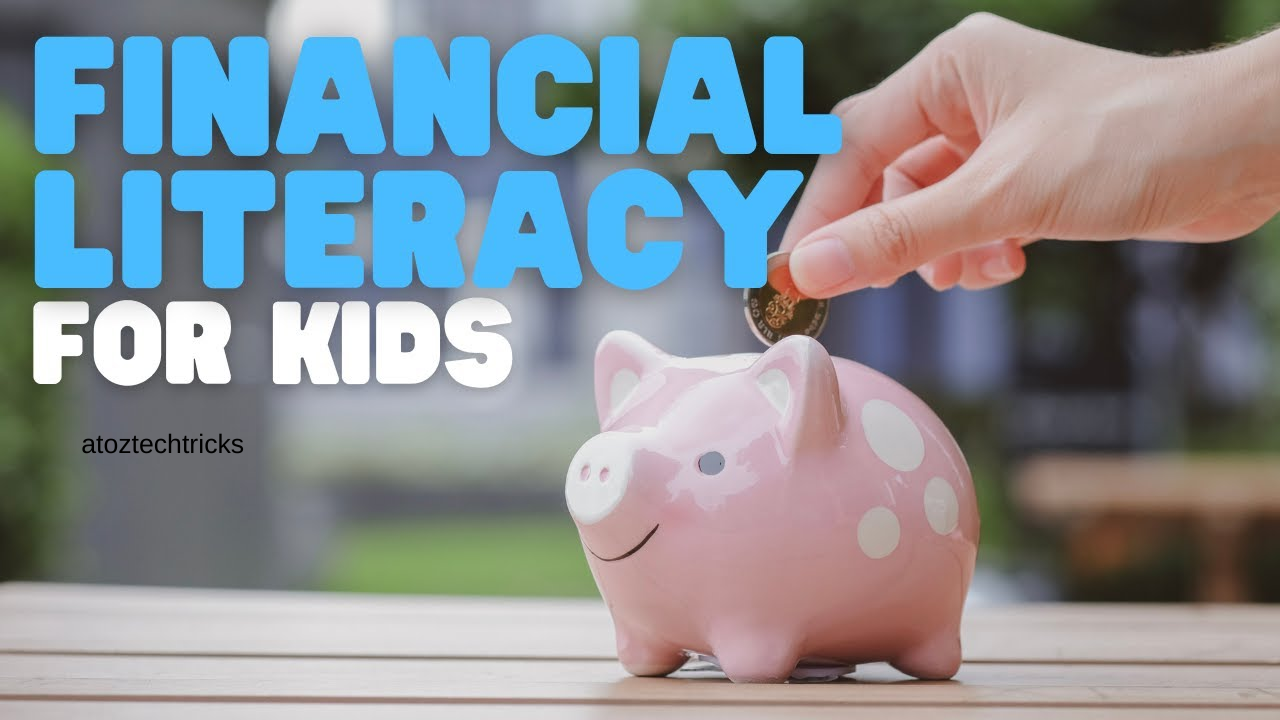Teaching Children about Money and Budgeting: A Comprehensive Guide
Teaching children about money and budgeting is a vital life skill that can set them up for financial success and security in the future. In a world where financial literacy is increasingly important, equipping children with the knowledge and habits they need to manage money responsibly is crucial. This guide explores effective strategies for teaching children about money, from basic concepts to more advanced budgeting techniques.
The Importance of Financial Education
Financial education is essential for developing responsible money habits and avoiding common pitfalls such as debt and poor financial planning. Research shows that children who receive early financial education are more likely to make informed financial decisions as adults. By learning about money management from a young age, children gain skills that can help them navigate financial challenges throughout their lives.
Encouraging Savings and Investment Habits: A Comprehensive Guide
Starting Early: Introducing Basic Concepts
1. Understanding Money
The first step in teaching children about money is to introduce them to its basic concepts. Young children can learn about money through simple, age-appropriate activities:
- Play with Coins and Bills: Use real or play money to help children understand the different denominations and their values. Practice counting money and making simple transactions.
- Visit a Bank: Take a trip to a bank to show children how money is deposited, withdrawn, and managed.
2. The Value of Money
Teach children that money has value and is earned through work. Explain that money is used to purchase goods and services and that it requires effort to earn:
- Chores and Allowance: Introduce the concept of earning money by assigning age-appropriate chores. Offer an allowance as a reward for completing these tasks, emphasizing the connection between work and income.
- Savings Goals: Encourage children to set small savings goals for items they want to buy. This helps them understand the importance of saving and delayed gratification.

Developing Budgeting Skills
1. Creating a Budget
Once children grasp the basics of money, teach them how to create a budget. A budget helps manage income and expenses, ensuring that money is used effectively:
- Simple Budgeting Tools: Use visual aids like charts or budgeting apps designed for kids. These tools can help children track their income, expenses, and savings.
- Budgeting Categories: Introduce the concept of dividing money into categories such as savings, spending, and giving. Explain the importance of allocating money to each category based on priorities and needs.
2. Tracking Expenses
Help children understand how to track their spending and stick to their budget:
- Expense Tracking Sheets: Provide a simple tracking sheet or app where children can record their expenses. This helps them see where their money is going and make adjustments if needed.
- Regular Reviews: Schedule regular check-ins to review their budget and expenses. Discuss any discrepancies and adjust the budget as necessary.
Practical Exercises for Teaching Budgeting
1. Budgeting for a Project
Engage children in budgeting for a small project, such as a birthday party or a school event:
- Setting a Budget: Determine the total amount of money available for the project and allocate funds to different categories (e.g., decorations, food, entertainment).
- Making Choices: Help children make decisions on how to spend their money within the budget. This exercise teaches them about trade-offs and prioritizing expenses.
2. Grocery Shopping
Take children grocery shopping and involve them in making budget-conscious decisions:
- Comparison Shopping: Show them how to compare prices and choose items within a budget. Discuss the importance of making cost-effective choices.
- Using Coupons: Teach children how to use coupons and discounts to save money. Explain how small savings can add up over time.
Introducing Children to Credit and Debt: A Comprehensive Guide
Advanced Budgeting Concepts
As children grow older, introduce more advanced budgeting concepts:
1. Savings and Investments
Explain the difference between saving and investing, and discuss the benefits of each:
- Savings Accounts: Introduce the concept of a savings account and its benefits, such as earning interest on deposited funds.
- Investing Basics: Provide a basic overview of investing options, such as stocks, bonds, and mutual funds. Emphasize the importance of long-term growth and risk management.
2. Understanding Credit
Teach children about credit and its role in personal finance:
- Credit Cards: Explain how credit cards work, including interest rates, minimum payments, and the importance of paying off the balance in full.
- Credit Scores: Introduce the concept of a credit score and its impact on borrowing and financial health.
Encouraging Financial Responsibility
1. Setting Goals
Encourage children to set financial goals and develop a plan to achieve them:
- Short-Term and Long-Term Goals: Help children set both short-term and long-term financial goals, such as saving for a toy or a future college fund.
- Tracking Progress: Use visual aids like goal charts or savings jars to track progress toward their goals. Celebrate milestones to keep them motivated.
2. Teaching Financial Responsibility
Instill values of financial responsibility and stewardship:
- Charitable Giving: Introduce the concept of charitable giving and encourage children to donate a portion of their money to causes they care about.
- Avoiding Impulse Purchases: Discuss the importance of avoiding impulse purchases and making thoughtful spending decisions.

The Role of Parents and Guardians
Parents and guardians play a crucial role in teaching children about money and budgeting:
1. Leading by Example
Children learn by observing their parents’ behaviour. Demonstrate good financial habits by:
- Budgeting at Home: Show children how you create and stick to a household budget. Involve them in family financial discussions and decision-making.
- Saving and Investing: Practice saving and investing in front of your children. Explain your financial choices and the rationale behind them.
2. Encouraging Open Communication
Foster an environment where children feel comfortable discussing money:
- Financial Conversations: Have regular conversations about money, budgeting, and financial goals. Answer their questions and guide them on financial matters.
- Encouraging Questions: Encourage children to ask questions about money and budgeting. Provide clear and age-appropriate answers to help them understand financial concepts.
Using Technology and Resources
1. Educational Apps and Games
Leverage technology to make financial education engaging:
- Budgeting Apps: Explore apps designed for kids that teach budgeting and money management through interactive activities and games.
- Online Resources: Utilize online resources and educational websites that offer financial literacy games and tools for children.
2. Books and Educational Materials
Introduce children to financial education through books and materials:
- Children’s Books: Select age-appropriate books that teach financial concepts in a fun and relatable way. Examples include “The Berenstain Bears’ Trouble with Money” and “The Money Tree.”
- Workbooks and Guides: Use workbooks and guides that offer exercises and activities to reinforce financial concepts.
Preparing Children for Financial Independence: A Comprehensive Guide
Overcoming Challenges
Teaching children about money and budgeting can come with challenges:
1. Addressing Misconceptions
Children may have misconceptions about money and budgeting. Address these by:
- Clarifying Misunderstandings: Provide clear explanations to correct any misconceptions. For example, if a child believes that money grows on trees, explain how money is earned through work.
- Encouraging Critical Thinking: Teach children to think critically about financial decisions and evaluate the consequences of their choices.
2. Adapting to Developmental Stages
Tailor financial education to the child’s developmental stage:
- Young Children: Focus on basic concepts like counting money and understanding its value.
- Older Children and Teenagers: Introduce more advanced concepts such as budgeting, saving, investing, and credit management.

Teaching children about money and budgeting is an investment in their future financial well-being. By starting early and using engaging, age-appropriate methods, you can help children develop the skills and habits they need to manage money responsibly. Emphasizing the importance of budgeting, saving, and making informed financial decisions will prepare them for a lifetime of financial success. Through consistent guidance and positive reinforcement, you can empower your children to make wise financial choices and achieve their financial goals.




Post Comment